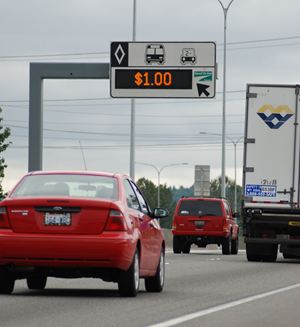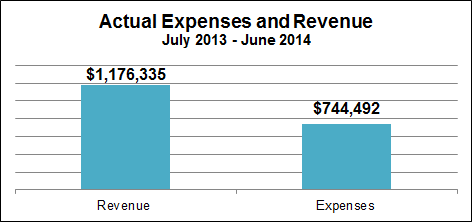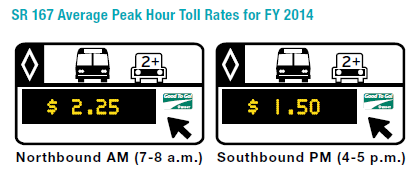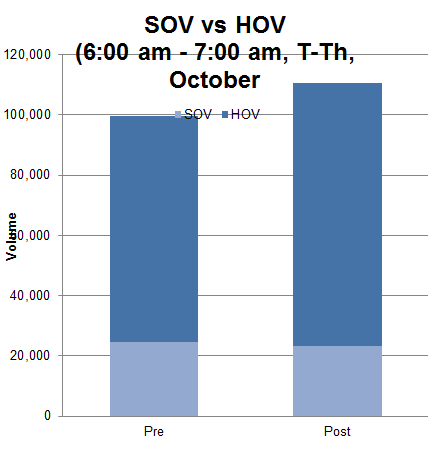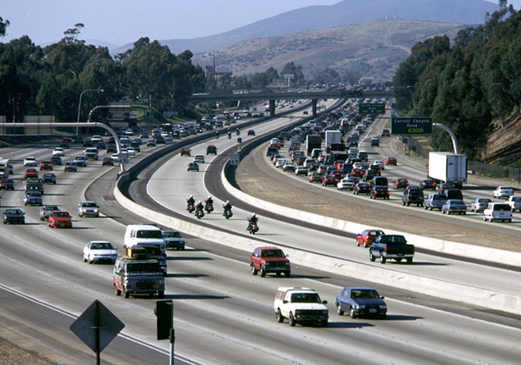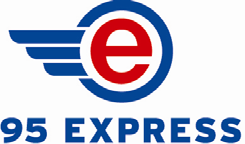Patrick DeCorla-Souza, Tolling and Pricing Program
Manager, FHWA
Lee Munnich, Humphrey Institute, University of Minnesota
Kenneth Buckeye, Minnesota Department of Transportation
John Doan, SRF Consulting
Center for Innovative Finance Support
Federal Highway Administration
Nineteenth Part of a Webinar Series on Overcoming the Challenges
of Congestion Pricing.
Presentations:
- Matthew Click, AICP, Priced Managed Lanes Director, HNTB
- Tyler Patterson, Toll Lane Systems Operations Manager, Transportation
Research Board, pattert@wsdot.wa.gov
- Dave Schumacher, Principal Planner, San Diego Association of
Governments, dsc@sandag.org
- Debora M. Rivera, P.E. Director of Transportation Operations,
Miami debora.rivera@dot.state.fl.us
Session 19: Evaluation Procedures for Converting from HOV Lanes
to Priced Managed Lanes - Presentations
Audio:
Link to Recording:
https://connectdot.connectsolutions.com/p4f73gixhfy/
Recordings and Materials from Previous Webinars:
https://www.fhwa.dot.gov/ipd/tolling_and_pricing/resources/webinars/congestion_pricing_2011.aspx
Part A: development of Priced Manged Lanes
2015 FHWA Webinar Managed Lanes
DEVELOPMENT OF PRICED MANAGED LANES
MATTHEW CLICK, AICP
What are Managed Lanes?
What are Priced Managed Lanes?
- A tolled corridor inside of an existing road
- Congestion is managed with pricing
Who Can Use PMLS and Who Pays?
- Single Occupant Vehicles (SOV)
- Cars
- Motorcycles
- Hybrids / Alternative Fuel Vehicles
- High Occupant Vehicles (HOV2, HOV3+)
-
Transit Vehicles
- Trucks (3+ axles)
Who Can Use Priced Managed Lanes?
| Priced Managed Lane Types |
Vehicle Types |
| SOV |
HOV2+ |
HOV3+ |
Transit |
Trucks (3+ Axels) |
| HOT2+ |
• |
◦ |
◦ |
◦ |
x |
| HOT3+ |
• |
• |
◦ |
◦ |
x |
| ETL |
• |
• |
• |
◦ |
x |
| TOT |
x |
x |
x |
x |
• |
| Mixed ETL |
• |
• |
• |
◦ |
• |
◦ Free •
- Priced x - Not Allowed
SOV = Single Occupancy Vehicles
HOV = High Occupancy Vehicles
COM = Commercial Vehicles
MTK = Medium Duty Trucks (FHWA Class 4-7)
HTK = Heavy Duty Trucks (FHWA Class 8-13)
Priced Managed Lanes in Operation
What are the Benefits of PMLS?
- Trip reliability
- Time savings
- Improved mobility
- Congestion management
- Revenue generation
- Reduction in capital costs
National Lessons Learned?
- Must have a "political champion"
- Engage the media and public early and often
- Address equity issues early in the planning process
- Multi-modal approach helps with public acceptance
- A system plan approach can help
Future Trends in Pricing?
- Dynamic pricing
- Less exceptions for "free" usage
- More multi-faceted pricing schemes
- Mileage based pricing
2015 FHWA Webinar
Managed Lanes
Development of Priced Managed Lanes
Matthew Click, AICP
Part B: Pricing - Where Are We Now?
SR 167 HOT Lanes
Express Toll Lanes (version 1.0)
Tyler Patterson
Toll Lane Systems Operations Manager
Transportation Research Board
Managed Lanes and Congestion Pricing Committees September 2015
Overview
- WSDOT's HOV System
- Why High Occupancy Toll Lanes / Express Toll Lanes?
- Why did WSDOT choose SR 167?
- HOT Conversion and Early Operations
- Continuous Access on SR 167
- Current Operations
- What did we learn?
- Future of Express Toll Lanes at WSDOT
Washington's HOV system
- 310 lane-mile HOV system
- Right-of-way for regional bus service while providing incentive
to vanpool and carpool and avoid congestion
- Fully open (non-designated) access between the HOV lane and
the adjacent general purpose lane.
- HOV lanes in the Seattle area are well-used and many fail to
meet state and federal performance goals, particularly during peak
periods.
HOV lanes designed to manage demand
Currently experiencing breakdowns
- HOV asset: Over $2 billion has been invested
since the 1970s to build out a 300-mile HOV system in Central Puget
Sound.
- HOV congestion: Lanes should operate at 45
mph 90 percent of the time during peak periods. Many HOV lanes currently
don't meet this performance standard, as the 2+ HOV lanes are over-utilized.
- HOV management: Some HOV lanes are congested,
some are underused.
- Congested lanes mean inability to guarantee transit
trips: Bus service costs increase and require more coaches
when trips are slow or unreliable.
Why Express Toll Lanes?
- Express toll lanes were originally proposed as a means to achieve
HOV speed and reliability standards needed to serve as an effective
transit right-of-way and carpooling incentive
- Provides an opportunity to meet HOV objectives, while improving
utilization and adding value for other users
- Express toll lanes provide tools to manage both vehicle and
person throughput
- Dynamic pricing manages vehicle flow and throughput
- But HOV objectives focus on person-throughput, not just
vehicles
- Transit and carpool exemptions provide incentive to fill
empty seats to maximize person throughput overall
Why did WSDOT choose SR 167?
- In 2002/2003 - WSDOT was looking for a corridor to act as "proof
of concept" for HOT or Express Toll Lanes, so that
we could add this valuable congestion management tool to our toolbox.
- From the 2003 HOT Lanes Pilot Project Analysis: Out
of 310 HOV lane miles in the Puget Sound Region, WSDOT considered
several HOV corridors as possible candidates for the HOT Lane Pilot
project including:
- I-405: SR 520 to I-5 (N)
- I-5: I-405 (South end I-405 to I-90 junction)
- I-90: I-405 to Issaquah
- SR 167: between Renton and Auburn
- WSDOT chose SR 167 because of its characteristics, including:
- Peak hour congestion
- Available space in the 2+ HOV lanes (one of the only locations
in the region where this was true)
- Only minor improvements needed to implement HOT lanes (i.e.
SR 167 there was roadway width to add a buffer within the current
footprint)
HOV to HOT Conversion

Pre-conversion
(Prior to May 2008)
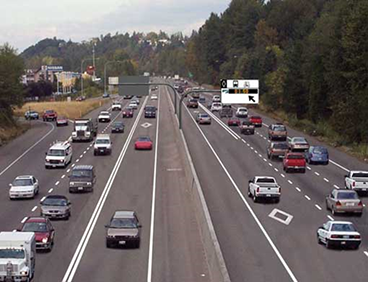
Post-conversion
(May 2008 - August 2014)
SR 167 HOT lane features
- Opened May 3, 2008
- Dynamic Toll Rates
- Free to buses and 2+ carpools
- Solo drivers pay a single toll to travel any distance on 10-mile
route
- Electronic signs indicate toll rate at each entry point
- 10 access points
- 6 Northbound
- 4 Southbound
SR 167 HOT Lanes are meeting objectives
| Objectives |
Accomplishments |
| Free flow traffic |
- HOT lanes speeds > 45 mph
- Travel times more reliable
|
| Reduced congestion |
- Daily tolled volumes up
- Corridor transit volumes up
|
| Improved safety |
- Average collision rate remains stable
- Incident response time down
|
| Demonstrated ability to finance improvements |
- HOT lanes generating revenue to cover operating costs
since April 2011
|
| Equitable use of facility |
- Annual surveys show both low and high income drivers
use HOT lanes
|
SR 167 HOT Lanes Performance Statistics
Fiscal year 2014
- 1.2 million gross toll revenue
- 4,400 tolled trips per weekday
- Average daily tolled trips have more than quadrupled since
opening
- Average 7 minutes savings for $2 toll
- Annual HOT lane revenue increased 3% over the previous year.
SR 167 HOT Lanes Performance Statistics
SR 167 HOT Lane Access Changes
- Per 2012 survey, 40 percent wanted easier access
"Sometimes it is hard to exit the HOT lanes to make
your exit off 167 due to the double line restriction. There should
be access points prior to each exit." - survey respondent
"Too many drivers violating the double white line crossing
restrictions without any apparent penalties. Creates a real safety
hazard." - survey respondent
"We have seen already that dedicated access points can
make it difficult for transit to use if not located appropriately
... a continuous access treatment would remove this uncertainty
for transit." - Sound Transit
"Our members have indicated that the number one complaint
they have received for the SR 167 HOT Lane Pilot Program is the
access control restrictions." - PSRC
SR 167 HOT Lane Access Changes
WSDOT removed the double white lines during August 2014
- Speeds are maintained, even during peak hours
- Drivers have an easier time accessing the HOT Lanes
- Increase in HOV usage in the HOT Lanes
- Initial results showed that the algorithm was not reducing the
rate quickly enough once volumes and speeds recovered after the
peak hour.
- The algorithm was adjusted on December 4, 2014 allowing
toll rates to step down at a faster rate
SR 167 HOT Lane Access Changes
- Continues to show monthly growth in toll transactions
SR 167 - Total Monthly Trips
Source: WSDOT Toll Division
SR 167 HOT Lane Access Changes
- HOV users have increased where SOV users remain relatively constant
Project assessment
WSDOT reports to the Legislature and the Transportation Commission
annually, on such items as:
- Freeway efficiency and safety;
- Effectiveness for transit;
- Person and vehicle movements by mode;
- Ability to finance improvements and transportation services
through tolls;
- The impacts on all highway users. The department will analyze
aggregate use data and conduct, as needed, surveys to assess usage
of the facility with geographic, socioeconomic, and demographic
information.
What did we learn from the SR 167 Pilot Project?
- Version 1.0 - proven the concept for drivers in Washington State
- We can point to a successful project in our own region.
- We've proven the technology works.
- We've proven there is a real operational benefit to our
drivers.
- Earned public support for other projects
- Pilot status is an advantage
- We've gone over 7 years on a 4 year pilot.
- We've been able to take advantage of the pilot status to
study continuous access, learn and grow our program.
- Tolling is a program, not just a project
- Operate the lane everyday.
- The DOT is shifting from builders to operators.
Express Toll Lane Program (Version 2.0)
WSDOT has plans for a 40-mile system Express Toll lane system
on our Eastside corridor.
- 17 miles of express toll lanes on I-405 from NE 6th Street in
Bellevue to I-5 in Lynnwood will open to traffic on September 27th!
- An extension of the SR 167 system in the southbound direction
will open in 2017.
- The connection between the two systems was just funded by Washington
State Legislature.
For more information
Tyler Patterson pattert@wsdot.wa.gov
https://www.wsdot.wa.gov/Tolling/405/default.htm
goodtogotolling@wsdot.wa.gov
www.facebook.com/WSDOT
Part C: San Diego's I-15 Corridor Managed Lanes
TRB Webinar on HOV Pricing
September 17, 2015
San Diego Association of Governments
Managed Lanes: In the Beginning
- I-15 HOV Express Lanes - 8-mile, two-lane, reversible facility
- Opened in 1987 to HOV only
I-15 Express Lanes: Issues
- By early 1990's, 2-lane HOV facility was still underutilized;
pressure to open to SOVs
- Suburban city mayor wanted funding to increase transit service
in corridor
- Interest locally in implementing pricing, but also opposition
to "double taxation"
I-15 Express Lanes: The Opportunity
- New federal authorization bill had Congestion Pricing Pilot
Program (1995)
- Was able to secure $9 million grant
- Suburban city mayor championed project
- Lead effort to secure approval from state legislature when
he became State representative
I-15 Express Lanes: Congestion Pricing Demo Program
Goals:
- Increase operating efficiency of both Express lanes and main
lanes
- Gauge consumer acceptance of concept of paying to bypass congestion
- Test subscription pricing elasticity initially, with idea of
moving to dynamic pricing
- Provide funding for increased transit in the I-15 corridor
I-15 Express Lanes: Congestion Pricing Demo Program
Framework for Planning:
- First agency to test pricing (1996)
- Focus was on pilot project
- Had political champion
- Evaluation was kept simple
I-15 Express Lanes: Congestion Pricing Demo Program
Planning Evaluation:
- Measure impacts on traffic in Express Lanes and main lanes
- LOS/HOV Lane integrity
- Time savings
- Operational safety
- Measure consumer acceptance
- Market research
- Subscription pricing/variable pricing elasticity
- Toll revenue potential
- Assess enforcement methods
I-15 Pricing Results: Strong Community Support
I-15 Pricing Results: Community Support
- Focus was not on raising revenues, but rather:
- Increasing transit
- Maximizing person throughput
- Reinvestment of toll revenues into transit countered "Lexus
Lane" issue
- Pricing provided "advertisement" for value of carpooling/vanpooling
I-15 Pricing "Ah-Ha" Moments
- Pricing led to increase, not decrease, in carpooling/vanpooling
- Lexus Lane issue dissipated quickly
- Most SOVs utilize HOV lanes occasionally
- Residents in corridor embraced pricing and new transit as creating "new
travel choices"
Pricing - Where Are We Now?
- Expansion of I-15 Managed Lanes into 20-mile Managed Lanes/Bus
Rapid Transit facility
I-15 Managed Lanes/ Bus Rapid Transit Concept
Direct access ramps open to BRT, carpools, and SOV buy-in users.
Pricing - Where Are We Now?
- Expansion of I-15 Managed Lanes into 20-mile Managed Lanes/Bus
Rapid Transit facility
- Long Range Regional Transportation Plan calls for regional network
of Managed Lanes
- Transit and carpooling/vanpooling equally important in focus
on increasing use of alternative modes
- Managed Lanes projects under development in two additional corridors
I-15 Managed Lanes: Lessons Learned
- Had elected official as project champion
- Were in the right place at the right time
- Reinvested toll revenues in transit in corridor
- Started out slowly with pilot project = low risk
San Diego's I-15 Managed Lanes
Dave Schumacher, Principal Planner
dsc@sandag.org
San Diego Association of Governments
Part D: DEVELOPMENT OF PRICE-MANAGED LANES: Florida's Approach to
Relieving Congestion and Increasing Choice
Debora M. Rivera, P.E.
Director of Transportation Operations, Miami
debora.rivera@dot.state.fl.us
(305) 470-5449
Florida Department of Transportation
- Decentralized Agency - Seven Districts + Turnpike
- $8.5 Billion Average Annual Funding (FY 2016-20)
- Nearly 10,000 projects
- Nearly 20,000 project phases
- Highly Privatized Project Delivery
- Construction 100%, CEI 90%
- Maintenance 85 - 90%
- Planning and Design 75 - 85%
Problem and Context
-
The Problem
- AADT of nearly 300,000
- Projected to increase to 360,000 by 2030
- Severe congestion, unreliable travel times
- General purpose lane speeds ~ 15 - 18 MPH
- HOV lane performance & degraded transit service
- HOV lane speeds ~18 - 20 MPH
- Physical & political constraints to widening
- Costly traditional solutions
- Limited Choice
- The Context
- Commuter corridor
- Established transit use with heavy demand
- Well-established Commuter Assistance & Ride-sharing
programs
- Acceptance of tolls
- Strong political advocacy for transit
The Solution
- USDOT Urban Partnership Agreement
- Tolling, technology, transit and travel demand
- Provided funding & encouraged innovation
- Rapid delivery
- Built upon previous efforts
- Accelerated schedule
- Pilot project
- Relatively low cost
- Existing infrastructure
Project Overview
- New capacity, same footprint
- Lane & shoulder width reductions
- Transit Improvements
- Regional agreements
- Signal priority
- Electronic Toll Collection (SunPass®)
- Complementary Strategies
- Carpool registration
- Verified and renewed regularly
- Enhanced enforcement
- Rapid incident response
- Ramp metering
Performance
- Project Success Defined
- The attainment of a particular goal or set of goals within
the context of specific parameters
- Did 95 Express work as expected and what are the performance
metrics?
- The ability to influence, through demonstrated achievement
(proof of concept), the adoption of new and bigger goals including
metrics for the measurement of their achievement
- How did 95 Express influence Florid's policy and pursuit
of Express Lanes elsewhere ?
- Transit
- More than double the number of passengers
- Added routes
- Average weekday boarding nearly 6,000
- Funding
- O&M support
- Replacement buses
- There will be set-backs
- Plan for them ahead of time
- Identify resources to respond
- Prepare your partners
Influence
- Proof of Concept
- Regional Managed Lanes Network
- Framework for on-going decision-making
- Statewide Express Lane Policy and Action Plan
What We Learned
- Understand your community, project history, context and purpose
- More is More: You can never over-communicate
- Outreach before, during & after
- Plan for it, fund it and do it!
- Focus on Operations & consider the entire corridor
- Do your operational analysis early
- Use a systems engineering approach
- Willingness to pay may surprise you
- You are developing a program not just a project
- Consider a change from HOV 2+ to 3+
- Be ready for something to go wrong
- How you respond can either build or destroy credibility
- Don't let construction outpace your ability to message
- This is not your typical project - folks may not know what
to expect
- Don't under or overestimate the project benefits
Common Misconceptions
- Express lanes make money
- Objective must be improved mobility & choice
- Express lanes will work everywhere
- Requires severity and duration of congestion
- Express lanes benefit only those who can afford to pay the tolls
- Significant improvements to general lanes are possible
- Express lanes alone can solve congestion problems
- Should be a part of a large mobility plan
If You Remember Nothing Else
- Understand your community, project history, context and purpose
- You cannot over-communicate
- Focus on Operations & use a corridor-based approach
- Be ready for the unexpected and have a plan
Congestion Relief and Choice
Please visit us at
https://95express.com





